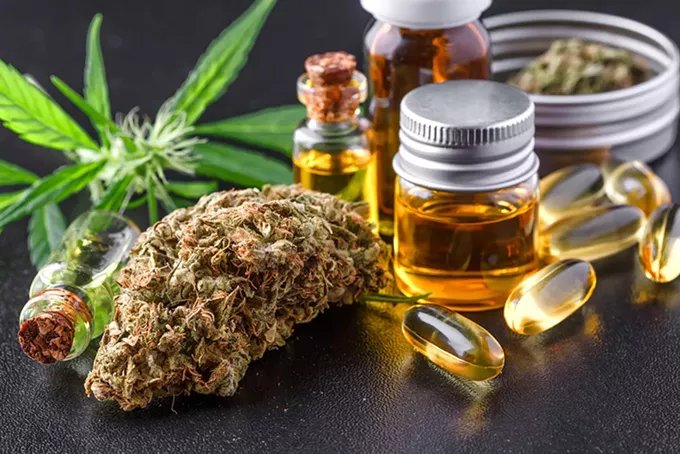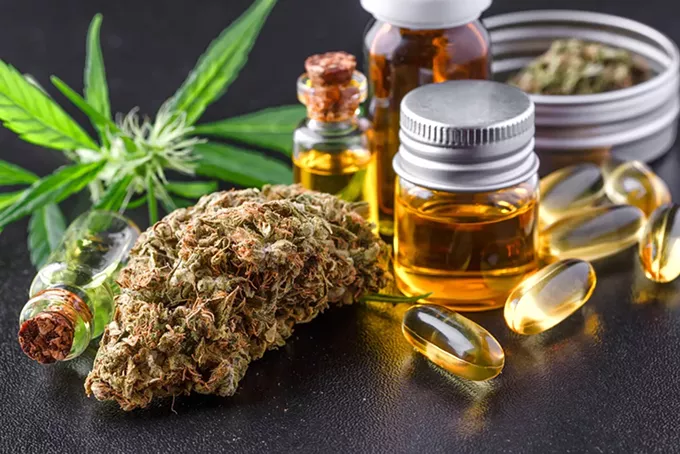Welcome to the inaugural edition of The Cannabis Boomer, a series of monthly articles about the science of cannabis with an emphasis on healthy use. Why is this an important topic?
Legalization of medical and recreational cannabis has freed users from the fear of criminal conviction and ushered in a new era of plant-based medicines. That’s progress. At the same time, legalization has opened a host of unforeseen problems.
Emergency room visits for cannabis-related reasons have increased by a staggering 120% from 2007 to 2020. Many — dare I say most — cannabis users don’t fully understand which types of cannabis to use for their specific issues, nor do they know how to find the right dosage. Your doctor wouldn’t (hopefully) send you home with a bottle of pills without some guidance on how many to take and when; yet, that is often how cannabis is used.
Recreational and medicinal users face a confusing array of products, some of which are, frankly, dangerous. The dramatic rise in THC potency has contributed to many negative outcomes. Understanding and preventing cannabis’ adverse effects are essential for safe and effective use.
The goal of this monthly article — and its accompanying Cannabis Boomer Podcast — is to carefully explore the science of cannabis. Although The Cannabis Boomer might seem aimed only at older users, the scientific insights I share are relevant to all ages. The podcast will offer a deeper look at the topics covered in this article, including interviews with scientists studying cannabis and the latest research findings.
So, who is The Cannabis Boomer? I am a neuroscientist, psychologist and, yes, a baby boomer.
I earned my PhD in cognition and neural systems from the University of Arizona, where I studied the role of a brain region called the hippocampus in memory and aging. I was also a fellow at the National Institutes of Health (NIH), where I conducted brain imaging studies in schizophrenia and other psychiatric disorders.
I want to understand the emerging science of cannabis, how cannabis works, and the safe ways to take advantage of this important plant-based medicine. I want readers who use cannabis to understand all the options and safety information so that they can make informed decisions. As I continue to learn, I want to share that information with you.
Why are clinical studies mixed?
Many people use cannabis to alleviate pain, improve sleep, boost mood, and help with anxiety. However, the hard clinical evidence supporting these uses is mixed.
Legal and regulatory barriers have certainly been one obstacle. Cannabis remains federally illegal in the United States, making it extremely difficult for researchers to obtain permits and funding for studies.
Even where medical cannabis is legal at the state level, federal restrictions still apply to research institutions. Federal agencies like the NIH have historically been reluctant to fund cannabis research due to its legal status. Private pharmaceutical companies often lack the incentive to invest in studying a plant they can’t easily patent. This usually means that cannabis studies must rely on smaller sample sizes and, therefore, show more variability in their results.
Even as pioneering researchers overcome the legal and funding barriers, standardization issues create major problems. Unlike pharmaceutical drugs with consistent formulations, cannabis products vary widely in their cannabinoid and terpene profiles, potency, and quality.
This makes it difficult to design controlled studies or replicate results across different research groups. Many clinical studies use purified extracts of THC or CBD, but we now understand that combinations of cannabinoids and terpenes work together synergistically — what’s known as the “entourage affect.” Some research allows users to consume the cannabis they normally use, but this creates issues with consistency. People react to cannabis in very different ways, so more research is needed to identify who might benefit from cannabis and in what form. Lastly, the method of use (whether vapes, flower, dabs, tinctures, or edibles) further complicates clinical studies.
Despite the challenges, there is good evidence that cannabis can treat:
neuropathic pain, the tingling and shooting pain caused by nerve damage from diabetes and multiple sclerosis, for example;
headache
pain following chemotherapy for cancer
post-traumatic stress disorder (PTSD)
some types of treatment-resistant seizures. More recent studies have shown certain forms of cannabis might prevent certain neurodegenerative diseases; however, that science is in its infancy and it’s simply too early to tell.
Be your own doctor
On the first full Cannabis Boomer Podcast titled “Cannabis and Pain Management,” I was joined by two professors of anesthesiology who study cannabis. We discussed the importance of taking matters into your own hands and experimenting — in a measured way — with different combinations of cannabinoids and terpenes to find the right mix for yourself.
Both guests were excited about “bottom-up” research, where cannabis users contribute to clinical trials, which is the opposite of how most clinical trials are conducted. My guests also mentioned new technology for journaling individual cannabis use and its effectiveness in treating specific medical conditions. Finding the right mix of cannabis through traditional journaling or new cellphone technology is a topic for a future podcast episode.
What are you smoking?
When researching the first podcast episode, I was immediately struck by a simple fact I had never considered before: what is on the label isn’t always what’s in the cannabis. Listeners and researchers contacted me about unethical growers and marketers who only test their products at labs known for giving favorable results. Another tactic is to provide only the best samples to the testing labs. An investigation into labeling accuracy in the United States showed that cannabinoid content (THC and CBD) was underlabeled in 25% of tested products and overlabeled in 60% of 75 products examined. Besides inaccurate potency information, studies have found contamination with heavy metals, residual solvents, mold, and pesticides. The key takeaway is that you should look for products from reputable companies and dispensaries. Truth in labeling will be the focus of the upcoming second full episode of the podcast.
(Except for the headline, this story has not been edited by PostX News and is published from a syndicated feed.)


